SOUTH VIETNAM

|
|
|||||||||||||||||||||||||||||||||||||||||||||
|
A division of
the L� Empire of Annam occurred in 1527 when it was divided in a Northern
part ruled by the Mac and later by the Trinh Dynasty. The South henceforth
was ruled by the Nguyen Dynasty. In 1623, Nguyễn
Ph�c Nguy�n, residing in Hu� and the lord of the (then) southern provinces of
Viet-nam, established a trading community at Saigon with the consent of the
king of Cambodia. Over the next 50 years, Vietnamese control slowly expanded
in this area but only gradually as the Nguyễn were fighting a
protracted civil war with the Trịnh Lords in the north. With the end of
the war with the Trịnh, the Nguyễn were able to devote more
effort (and military force) to conquest of the south. First, the remaining
Champa territories were taken; next, the areas around the Mekong river were
placed under Vietnamese control. In the late
18th century, Vietnam was briefly unified under the T�y
Sơn. These were three brothers, former |
|
||||||||||||||||||||||||||||||||||||||||||||
|
peasants, who
succeeded in conquering first the lands of the Nguyễn and then the
lands of the Trịnh. But final unification came under Nguyễn Ph�c
�nh, a remarkably tenacious member of the Nguyễn noble family who
fought for 25 years against the T�y Sơn and ultimately conquered the
entire country in 1802. He ruled all of Vietnam under the name Gia Long. |
|||||||||||||||||||||||||||||||||||||||||||||
|
Heraldry |
|||||||||||||||||||||||||||||||||||||||||||||
|
The Champa
Empire covered for a lomg time most of today�s South Vietnam. It was slowly
conquered by North-Vietnamese rulers until in the 18th century there ony
remained a trunk state in the far south. Today the Champa are an ethnic
minority in Vietnam. From the
eraly Chapa Empire there remain the famous bronze drums.
Two drums from the South
Vietnamese Champa era. 3rd century BC. 12- and
16-rayed suns probably meant to be the emblem of the Champa Empire. The surrounding
birds are egrets and are probably the emblems of the ruling dynasty.
Generally the drum is a symbol of Royal Authority. As such it is qualified
from Africa to the Indonesian Archipelago. In Central Africa� for example, the �mastering of the drum�
was a condition for royal succession. In Indonesia the great gong was the
centerpiece of the orchestra of the court. The sound
of Champa drums are said to stimulate rain and could only be beaten by
high-ranking individuals thus legitimizing their authority.[1]
Rattan shield with Champa sun. 19th
century. Mus�e d�Angoul�me (Fr.). Collection Jules Lhomme This
shield suggests that the Champa sun as a symbol of the empire was handed over
for more than� two millennia. |
|||||||||||||||||||||||||||||||||||||||||||||
|
Flag of Cochin-China. Europe,
18th century. With the legend �Vlag van Sina� According to early 18th century flag-charts
the flag of the Nguyen lords showed a spiral between some mythical beasts. No
local and contemporary sources mention this flag. [2] The spiral undoubtedly is a
version of the yin-yang symbol which is the emblem of state. The other symbols are symbols of authority.
They are: a bust, a dragon, a phoenix, a snake (python), a fish (?), an ape
(?), a crane and a pot of flowers. These symbols remind the symbols of authority
and the five elements of nature as on Qing Emperor�s clothes.[3] Such symbols, but different, are
also on the �Nine Dynastic Urns� in the Forbidden City of Hu�, made 1835. [4] A possible meaning of the flag would be �the
head of state holding eight authorities�.
Flag of Cochin China, From a German Flag book 1878.. With the legend �Cochinchina�. This flag became obsolete with the
proclamation of the Empire in 1802. [5] From this
time is the seal of� Nguy�n Phuc Chu
(1691-1725), having a lion-and-ball as its handle. Seal with lion-handle, 1709 Made
for Nguy�n Phuc Chu (1691-1725) master of the State of Annam. Gold,
108 � 108 � 63 mm. On the left side the legend: K� b�t thập kim, lục
hốt tứ lạng tứ tiền t�m ph�n (80% pure
gold, weighing 6 lingots, 4 and 4/10 and 3/100 ta�l (= 64,43 ta�ls = 2364 g) On the right: Vĩnh Thịnh ngũ ni�n thập nhị
nguyệt sơ lực nhật tạo, (created the
6th day of the 12th month of the 5th year of the Vinh Thinh era (1709). Print of the seal The inscription on the seal reads: Đại Việt quốc
Nguyễn Ch�a vĩnh trấn chi bảo, (Seal of
the eternal government of the Nguyen Lords of the Great kingdom of Vi�t). This seal
classifies Nguy�n Phuc Chu as a mandarin (official) of the 2nd military rank. [6] |
|||||||||||||||||||||||||||||||||||||||||||||
|
1864-1946 |
|||||||||||||||||||||||||||||||||||||||||||||
|
In September
1858, France occupied Đ� Nẵng (Tourane). On 18 February 1859, they
conquered Saigon and three southern Vietnamese provinces: Bi�n H�a, Gia
Định and Dinh Tuong; the Vietnamese government was forced to cede
those territories to France in June 1862. In 1867, the
provinces of Ch�u Đốc, Ha Tien and Vĩnh Long were added to
French controlled territory. In 1864 all the French territories in southern
Vietnam were declared to be the new French colony of Cochinchina. From then on until
1945, the emblems of authority of the French Republic were also valid in
Cochin China. The seal of the Republic, consisting of a seated Liberty with
fasces was slightly adapted for the purpose. The symbols for agriculure, the
arts and science were replaced by a sheaf of rice. On the right side the
branches of oak were replaced by an anchor (as, initially, the colony was
under the supervision of the Ministry of the Navy and the Colonies) and the
cock on the rudder disappeared.� Also,
and of some symbolic importance, the urn symbolizing General Suffrage was
omitted.
1
centime-piece 1879. �On the reverse the legend COCHINCHINE
FRAN�AISE In 1887, Cochin
China became part of the Union of French Indochina which had the same adapted seal. In July 1941,
Japanese troops were based in French Cochinchina (a de facto
occupation). After the Japanese surrendered in August 1945, Cochin China was
returned to French rule. |
|||||||||||||||||||||||||||||||||||||||||||||
|
Cong Hoa Nam Ky�
(Republic Cochin
China) |
01.06.1946-1947 |
||||||||||||||||||||||||||||||||||||||||||||
|
South
Vietnam In southern
Vietnam, the Japanese surrendered to British forces. The British supported
the Free French forces in fighting the Viet Minh. On 1 June 1946
admiral Thierry d'Argenlieu, high commisioner in
Indochina, proclaimed the Autonomous Republic of Cochin China� with Dr. Nguyễn Văn Thinh as its
president. As it frustrated
the Vietminh's desire to rule all of Vietnam, war between France and the
Vietminh followed (1946�54). By Law of 4 June 1949 Cochin China was integrated into the State of
Viet-Nam.
Flag of the Republic of Cochin China The
emblem of this republic was, according to the Official Bulletin of 15 July
1946, a yellow flag with three blue horizontal stripes (a trigram
meaning �South�). [7] On 10 October 1946 the Vệ binh Cộng h�a Nam
Kỳ, the (South Vietnamese) Republican Guard was founded. On 9 June 1948� it was renamed Vệ
binh Nam Việt (VBNV, South Vietnamese Guard). |
|||||||||||||||||||||||||||||||||||||||||||||
|
Emblem of the South Vietnamese Republican Guard |
Arms of the South Vietnamese Guard, 1948-�54. |
||||||||||||||||||||||||||||||||||||||||||||
|
The
emblem of the Republican Guard showed a halberd, a mace, a bow and a quiver
in saltire, charged with a red disc charged with a lion�s mask and surrounded
by a white bordure. In chief are
the arms of the Republic: Or, a pale Azure charged with two pallets Argent.[8] The arms
of the VBNV was: Gules, a sword per pale surrounded by a dragon Or. In chief
a yellow scroll with the initials V.B.N.V. |
|||||||||||||||||||||||||||||||||||||||||||||
|
Quoc-gia Viet-nam (State of Vietnam) |
23.05.1948-1955 |
||||||||||||||||||||||||||||||||||||||||||||
|
Cochin China
was renamed the �Republic of South Vietnam� in 1947, the �Provisional Central
Government of Vietnam� in 1948, and the �State
of Vietnam�, with former emperor Bảo Đại as head of
state, in 1949. The Bảo Đại government received international
diplomatic recognition in 1950. The flag was changed by decree n� 3 Art, 3 of
2 June 1948. The stripes were made red again, like on the flag of Thanh Thai.
They have the form of the trigram for �South� but they can also be
interpreted to be a symbol for the three Vietnamese territories of Tonkin,
Annam and Cochin China.
Seal of� Bao Dai 1949-1954 |
|||||||||||||||||||||||||||||||||||||||||||||
|
The First
Indochina War lasted until 1954, with the French being defeated at the Battle
of Dien Bien Phu. France and the Vietminh
then concluded the Geneva Accords in 1954. As a result of this agreement, the
southern half of the French protectorate of Annam was merged with the State
of Vietnam, with the resulting state commonly referred to as South Vietnam.
The French re-installed Bao Dai as head of state of �the State of Vietnam�,
which comprised central and southern Vietnam. The Geneva
Conference of 1954 ended France's colonial presence in Vietnam and
temporarily partitioned the country into 2 states at the 17th parallel (pending
unification on the basis of internationally supervised free elections). The
US installed Ngo Dinh Diem as Prime Minister of South Vietnam with Bao Dai as
the king of a constitutional monarchy. After the
Geneva Accords a coat of arms appeared. It showed the pale and pallets of the
flag, arranged vertically and charged with a blue dragon passant.�
Arms of Vietnam, 1954-1955 This coat of arms became obsolete in 1955. |
|||||||||||||||||||||||||||||||||||||||||||||
|
23.10.1955-30.04.1975 |
|||||||||||||||||||||||||||||||||||||||||||||
|
Prime minister Diem used a referendum in 1955 to depose Bao Dai and
declare himself as President of the Republic of Vietnam (South Vietnam). The
Republic of Vietnam was proclaimed in Saigon on 22 October 1955. The first emblem of the Republic showed bushes of bamboo growing on a
hill. |
|||||||||||||||||||||||||||||||||||||||||||||
|
Emblem of the Vietnamese Republic, used 1955-1957 |
Presidential seal |
||||||||||||||||||||||||||||||||||||||||||||
|
On the presidential seal there were bushes of
bamboo and the name of the country and the office as a legend. In the autumn of 1957 the second emblem was
introduced with the bushes of bamboo and a scroll with the name VIET-NAM,
encompassing a paint brush and a sword.
Emblem of the Vietnamese Republic, used 1957-1963. A
coloured version shows the background yellow, the bamboo green and the
bordure red. |
|||||||||||||||||||||||||||||||||||||||||||||
|
Seal of the President of the Vietnamese Republic, used 1955 - 1963. |
Presidential Flag |
||||||||||||||||||||||||||||||||||||||||||||
After the assasination of Diem on 1 November 1963
the emblem with the bamboo-bushes disappeared. It was replaced by a coat of
arms �of the flag�, supported by two green dragons.
Arms:� Or, a pale Gules, two pallets Or. Supporters: Two Chinese dragons Or. [9]
On the presidential seal the achievement is
surrounded by the legend: viet-nam
cong-hoa tong-th�ng. The achievement was used 1963-1975. Presidential
Flag After the Tet-offensive
of 1968 and the resulting e Paris Peace Agreement of 1973, American military
forces withdrew from Vietnam. Despite the peace treaty, the North continued
the war, and defeated the South in April 1975. In 1976, South Vietnam was
officially united with the Democratic Republic of Vietnam in the Socialist
Republic of Vietnam. |
|||||||||||||||||||||||||||||||||||||||||||||
|
Cong-hoa Mien-nam Viet-nam |
1975-02.07.1976 |
||||||||||||||||||||||||||||||||||||||||||||
|
When Saigon capitulated to the Viet-Cong on 1
May 1975 a Republic of South Vietnam was established. This Republic adopted a
national emblem identical to the emblem of the Democratic Republic, the star
and the cogwheel replaced by the map of Vietnam. On the scroll below is the
name of the Republic: Cong-Hoa Mien-nam Viet-nam. � See illustration in the head of this essay. On 2 July
1975 the Republic of South Vietnam was united with the Democratic Republic
and ceased to exist. The union received the name Socialist Republic of
Vietnam (Cong-hoa
Ca-hoi Chu-nghia Viet-nam) � |
|||||||||||||||||||||||||||||||||||||||||||||
|
Republic of Vietnam Armed Forces Quan Luc Viet Nam Cong Hoa |
|||||||||||||||||||||||||||||||||||||||||||||
|
Vietnam Armed Forces All Services badge |
Vietnam Armed Forces Tri-service badge |
||||||||||||||||||||||||||||||||||||||||||||
|
Army / Quan
Doi |
|||||||||||||||||||||||||||||||||||||||||||||
|
On 12 April
1947 the Bảo vệ qu�n (BVQ, Defense Force) was
founded in Hu�. In 1948 it was renamed Việt binh đo�n (VBD,
Vietnamese Army). The badge of
the VBD showed a rectangular shiled charged with the arms of Vietnam and the
legend VIET BINH DOAN, and was supported by a dragon, the sun-emblem in its mouth. |
|||||||||||||||||||||||||||||||||||||||||||||
|
Badge
of the Việt binh đo�n Vietnamese
Army (1947-49) |
Badge of the Vệ binh Quốc gia Vietnamese National Guard (1949-�55) |
||||||||||||||||||||||||||||||||||||||||||||
|
Somewhat before
the integration of Cochin China into Vietnam on 4 June 1949,� the Vệ binh Quốc gia
(VBQG, National Guard of (South-) Vietnam) was founded by decree of
the Minister of Defense of 13 April 1949. The achievement
of the VBQG� was: Arms: Gules, a phoenix displayed with swords
in its claws, on his breast and escutcheon Or, three bendlets sinister Gules. Crest: A flaming sun Supporters: Two dragons Motto: QUOC-GIA VIET-NAM on a scroll in base In 1955, when
the Republic was proclaimed, the VBQG was renamed Qu�n đội Việt
Nam Cộng h�a (QDVN, Vietnamese Republican Army). |
|||||||||||||||||||||||||||||||||||||||||||||
|
Republican Army 1955-�75 The achievement of the Republican army is: Arms: Or, a pale Gules charged with two pallets of
the first. Supporter: A Phoenix wings displayed, armed with two
swords, Or. Garland: Ears of rice, Or. Motto: DANH
DỰ -TỔ QUỐC -TR�CH NHIỆM (Honor, Nation, Responsibility) in red
lettering on a scroll Or. |
|||||||||||||||||||||||||||||||||||||||||||||
|
Navy / Hai� Quan |
|||||||||||||||||||||||||||||||||||||||||||||
|
Arms |
���������� �����������������Emblem |
||||||||||||||||||||||||||||||||||||||||||||
|
The origins of the Viet Nam Navy (Hai Quan Viet Nam) are in the
French Navy of 1952. In 1954, in accordance with the Elysee Accords, the
French handed control of the armed forces to the Vietnamese, but at the
request of the Vietnamese government, continued to be in charge of the Navy
until 20 August 1955. The arms of the Vietnamese Navy� of
1954 were: Arms: Gules, an anchor Or surrounded by a dragon Azure, on the dexter the
letters HQVN Or. |
|||||||||||||||||||||||||||||||||||||||||||||
|
Emblem |
Seal |
||||||||||||||||||||||||||||||||||||||||||||
|
The emblem of the Republican Navy shows: A steering wheel of eight spokes, charged with a foul anchor and a
five-pointed star counterchanged, on the wheel the legend TONG H�I H�I QU�N VIET NAM CONG HO� � MAGISTER POST DEUM� (Republic of Vietnam
Navy Command / Master after the Lord). The seal shows: Azure, a base wavy Sable, the map of Vietnam issuant from the chief Or,
and a foul anchor per pale charged with a five-pointed star Argent and Sable
counterchanged. The motto reads TO QUOC DAI DUONG (Our Country, The Ocean), and is written on a
ring of the national colours around the disc. |
|||||||||||||||||||||||||||||||||||||||||||||
|
Air Force / Khong Quan |
|||||||||||||||||||||||||||||||||||||||||||||
|
Arms The Vietnam Air Force, Khong Quan was inaugurated on 31 January
1955. The arms are: Arms: Azure, a dragon issuant Sable winged of the flag of the Republic,
piercing clouds Argent. Motto: TO QUOC� KHONG
GIAN (Our Home is the Air) The roundel is derived from the U.S. Air Force roundel. Its cap badge showed the phoenix of the army, the initials V.N. (Vietnam)
on its breast, a sun as a crest and two dragons as �supporters�. |
|||||||||||||||||||||||||||||||||||||||||||||
|
Roundel
Wings [10] |
|
||||||||||||||||||||||||||||||||||||||||||||
|
Marines |
|||||||||||||||||||||||||||||||||||||||||||||
|
The Republic of Vietnam Marine Division (Sư Đo�n Thủy Qu�n Lục Chiến (TQLC)) was established by Ngo
Dinh Diem on 13 October 1954. |
|||||||||||||||||||||||||||||||||||||||||||||
|
Arms |
Cap badge |
||||||||||||||||||||||||||||||||||||||||||||
|
Its arms are derived from the US Marines emblem. It is: Arms: Vert, a fould anchor per bend sinister, charged with a globe, charged
with a five-pointed star Gules charged, with the map of Vietnam and crested
with a phoenix Or.
Seal |
|||||||||||||||||||||||||||||||||||||||||||||
|
Police |
|||||||||||||||||||||||||||||||||||||||||||||
|
Police Command 1948 |
Ancient Police Badge |
||||||||||||||||||||||||||||||||||||||||||||
|
Arms |
Logo |
||||||||||||||||||||||||||||||||||||||||||||
|
Cap Badge |
|||||||||||||||||||||||||||||||||||||||||||||
 �
�
� Hubert de Vries 2012-02-10; Updated 2013-04-09








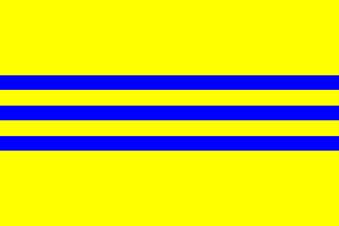













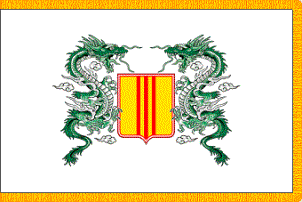








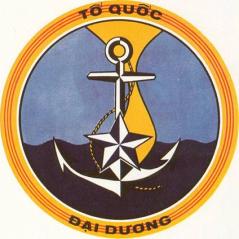
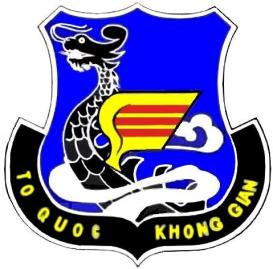
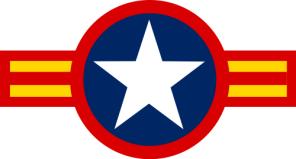
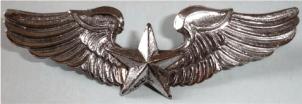
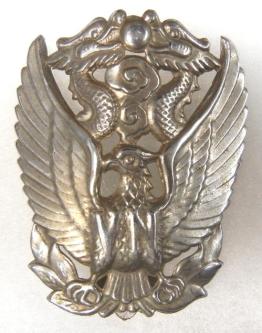
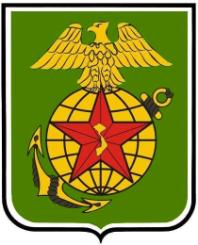

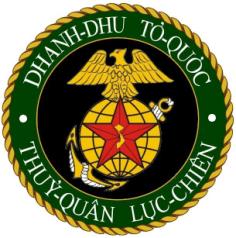
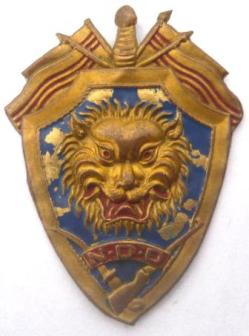

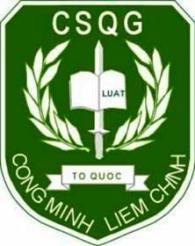
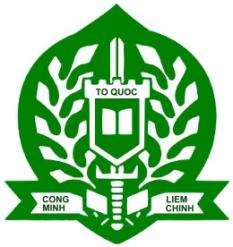
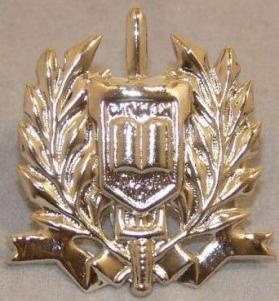
 Heraldry of the World
Heraldry of the World